Independence Avenue in Minsk
Main avenue of Minsk
The main street of Minsk is Independence Avenue (praspiekt Niezalieznasci). It crosses the city from the center towards the northeast. The length of the avenue is about 15 km. It is the longest avenue in Minsk. And also remains a candidate for inclusion in the UNESCO World Heritage List.

Several main sights of Minsk are located along Independence Avenue. Several metro lines are located underground along the avenue. Due to its length and significance for traffic, as well as for cultural heritage, Independence Avenue is considered the main road of Minsk. In the article we will tell you the most important and interesting facts about it.
Founding history of Independence Avenue
At the beginning of its foundation, Independence Avenue, like most places in Minsk, really differed from its modern appearance. Its history begsn in the middle of the XVI century. Then the road was a section of the Moscow-Vienna postal tract. It was an ordinary street that existed unchanged until the end of 1800, when the first urban planning plan in the history of Minsk was designed. Here begins the history of the modern avenue.

At the beginning of 1801, the street got new name Zakharyevskaya in honor of the Minsk governor Zakhariy Korneev. He approved active construction works on the street. Zakharevskaya Street was turned into a road bypassing the old part of the city (modern Upper Town). The military-political situation demanded this. Minsk laid on the Moscow—Warsaw highway, the traffic on which intensified year after year. Therefore, the bypass road should had unloaded the central part of the city.
Construction history of Independence Avenue in Minsk
In 1801, Zakharyevskaya Street became the main road of the city due to its length and intensive traffic. The street ran through the center of the city, so it was considered its core and face. It was here that the first ways for new public transport were equipped. The name of the street has changed 14 times over the entire time. We will talk about them below. Now we will use the name "Independence Avenue" for the convenience of perceiving the history of its construction and changes.

In 1892, the first horse-drawn railway in Minsk was launched along the avenue. This was the first significant architectural change in 90 years. A regular bus was launched in 1924 and a tram in 1929. However, until 1936, the main road of the city was not equipped in the best way. Along the entire length of the highway there was a narrow-gauge railway to the power plant, along which steam locomotives loaded with peat traveled. With their sparks, they caused fires in wooden houses. The project to remove the narrow-gauge railway and start transporting peat on tram platforms was developed and implemented in 1936.

During the Great Patriotic War, Independence Avenue was badly damaged. About a dozen houses only survived. The avenue had to be not only restored, but also rebuilt. In 1952, it was expanded, made more direct, and buildings were built in the classical style. At the same time, the first trolleybus was launched.

Active construction of buildings was carried out until 1955. Then a battle against architectural excesses began in the USSR. Buildings which only partially survived the war were demolished. They simply did not coincide with the general style of the avenue. As a result, modern Independence Avenue has a classic view in its central part, and buildings of a later style have been built at both ends.

In 1952, this avenue was called Sovetskaya Street. In September of that year, it received the status of an avenue. The erection of new buildings continues to this day, but the frame of Independence Avenue was formed during the years of active construction after the war. Now the buildings of those times are protected, some of them are included in the list of cultural values of Belarus.
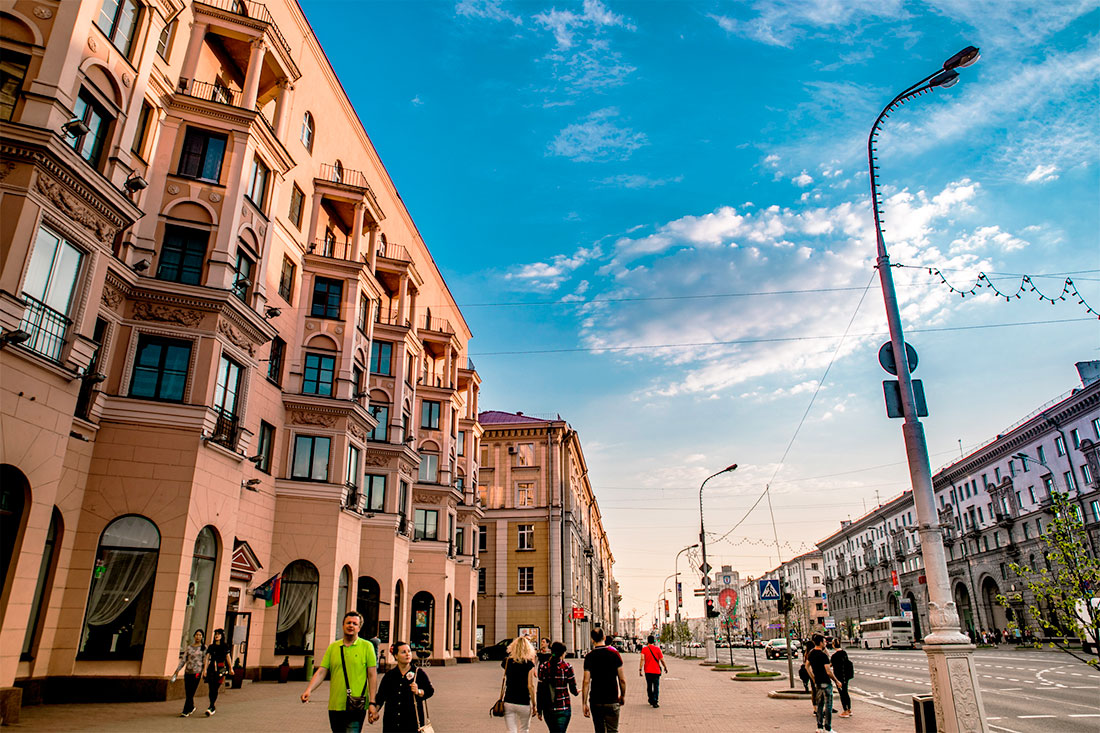
How did the name of Independence Avenue appear?
As we wrote above, the modern Independence Avenue had about 13 names. They vividly reflect the history of the city and Belarus: tsarist times, four wars, the Soviet period and modern independence.
-
Originally it was Zakharyevskaya Street. Part of it was called Alexandrovskaya.
- During the French occupation of 1812 — New City Street (rus. Noviy Gorod).
- During the First World War in 1918, it was renamed Hauptstrasse Street.
- In 1919 it was Sovietskaya Street.
- A year later, during the occupation of the city by the Poles, it was given the name of Adam Mickiewicz. The name lasted 9 months.
- Part of the street was renamed Borisovsky Tract. In 1937, on the 100th anniversary of Pushkin's death, this tract was renamed Pushkinskaya Street.
- After the restoration of Soviet power in 1920, it again became Sovietskaya Street.
- During the Second World War — Hauptstrasse Street and 25 March Street.
- After the liberation, the name Sovetskaya Street returned.
- In 1952 — Stalin Avenue.
- Since 1961 — Leninsky Prospekt.
- Since 1991 — Francis Skaryna Avenue.
In 2005, the main street of Minsk was renamed Independence Avenue.
Length of Independence Avenue in Minsk
The exact length of Independence Avenue is 15 km 300 m. It begins in the vicinity of the Central Railway Station of the city and ends in the residential neighborhood "Uruchye". There are 10 stations of the blue Moscow branch of the Minsk metro on the avenue. This branch is also considered the main one.
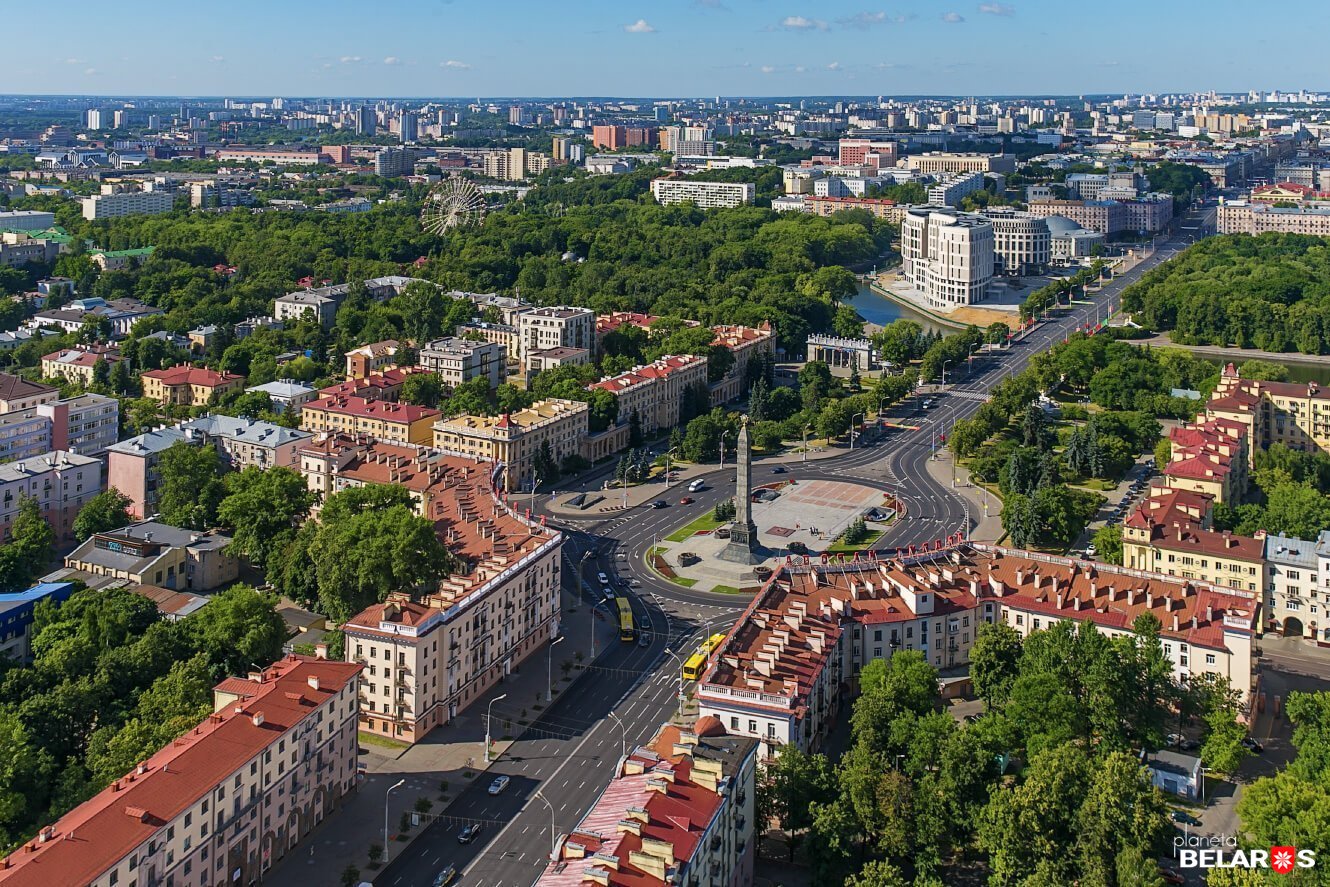
Five squares are located on Independence Avenue: Kalinina Square, Yakuba Kolasa Square, Victory Square,Kastrycnickaja Square, Independence Square.
What does the main street of Minsk look like?
Minsk Independence Avenue is an ideal example of a central street accumulating the core of the city around itself. The avenue embodies the socio-utopian ideals of the USSR, which flourished after the victory in the Great Patriotic War. Minsk was built as an ideal city, reborn from the ashes.
On the other hand, the avenue has gathered the largest number of elegant neoclassical buildings in the city. They were built during the Stalin period. That is why in the USSR the neoclassical style was also called the Stalinist architecture. After Khrushchev came to power in 1953, Minsk was filled with same-type buildings, radically different in style.
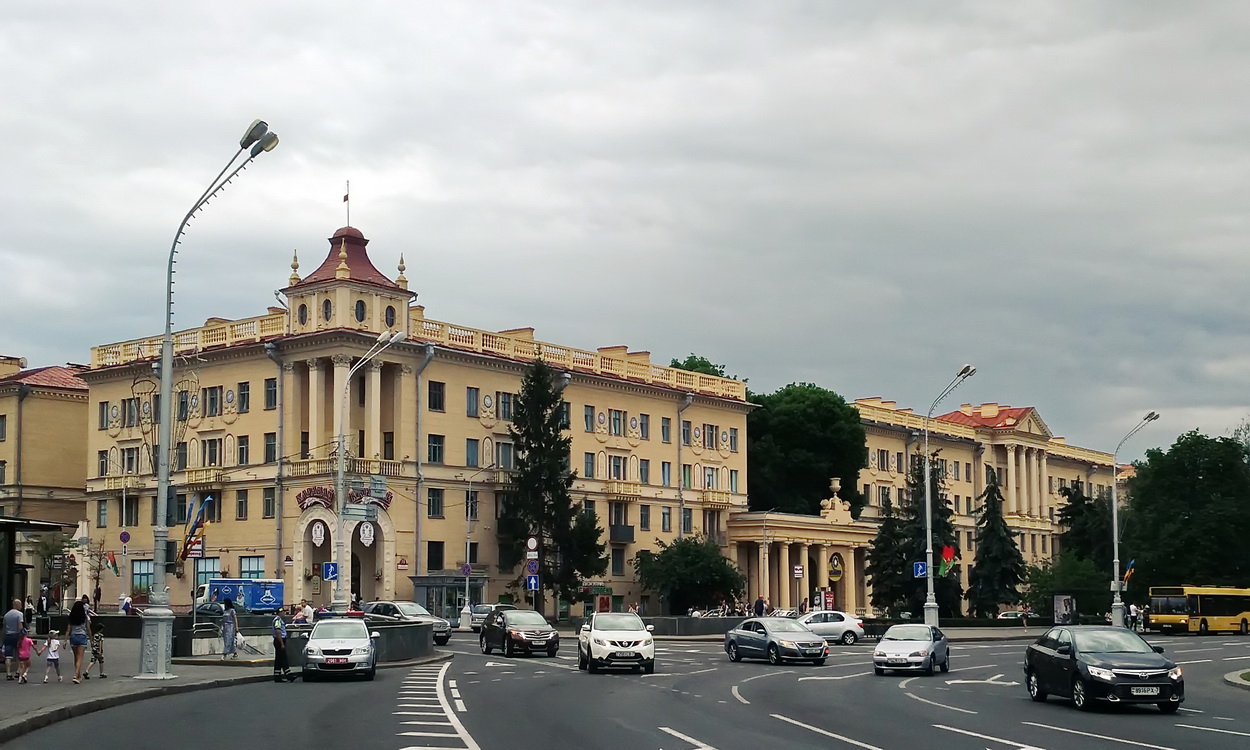
In September 2016, a group of UNESCO and ICOMOS specialists visited Minsk, as an application was submitted for the inclusion of Independence Avenue in the World Heritage List. The avenue is considered one of the most integral preserved ensembles of neoclassical architecture of the XX century.
Walk along Independence Avenue in Minsk: main sights
Let's take a closer look at most interesting architecture and important places of Independence Avenue. It starts with the largest square of the city − Independence Square. It was founded in 1933. Today there is the Church of Saints Simeon and Elena, as well as the Stolitsa shopping center. The tallest building of the square is the building of the Belarusian State Pedagogical University. Opposite, on the other side of the avenue, there are several buildings of the Belarusian State University.

Next to them the Central post office is located. It opened in 1953. The Central post office is also called the capital letter of Independence Avenue. Opposite it the Minsk Hotel stays. It is important to say that every building of the avenue does not exceed 5 floors.

On the same side with the hotel stands the building of the oldest operating "Centralny" Cinema. It started working in 1954. Three years before it, the main department store of Minsk, GUM, opened nearby. It is included in our list of the largest department stores in Belarus. This is the best example of the neoclassical architecture of the avenue.


Kastrycnickaja Square has existed in Minsk since the late 1940s. In 1956, the Palace of Culture of Trade Unions was opened here. In 1985, construction of the Palace of the Republic began, which opened in 2001.
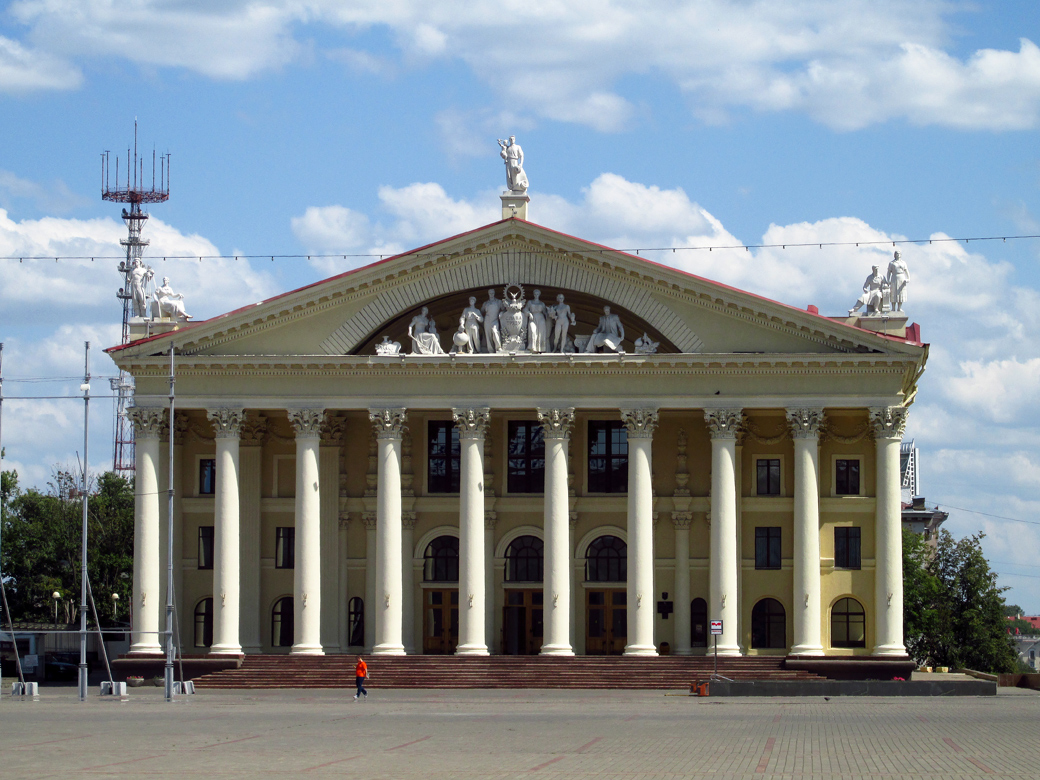

Circus building is also an important element of Independence Avenue. In 1959, the circus opened with its first show. At that time it was the largest and most beautiful circus in the USSR. In 2010, the circus was renovated. Gorky Park and Yanka Kupala Park begin near the circus on both sides of the avenue. They are included in the list of the best parks of Minsk.
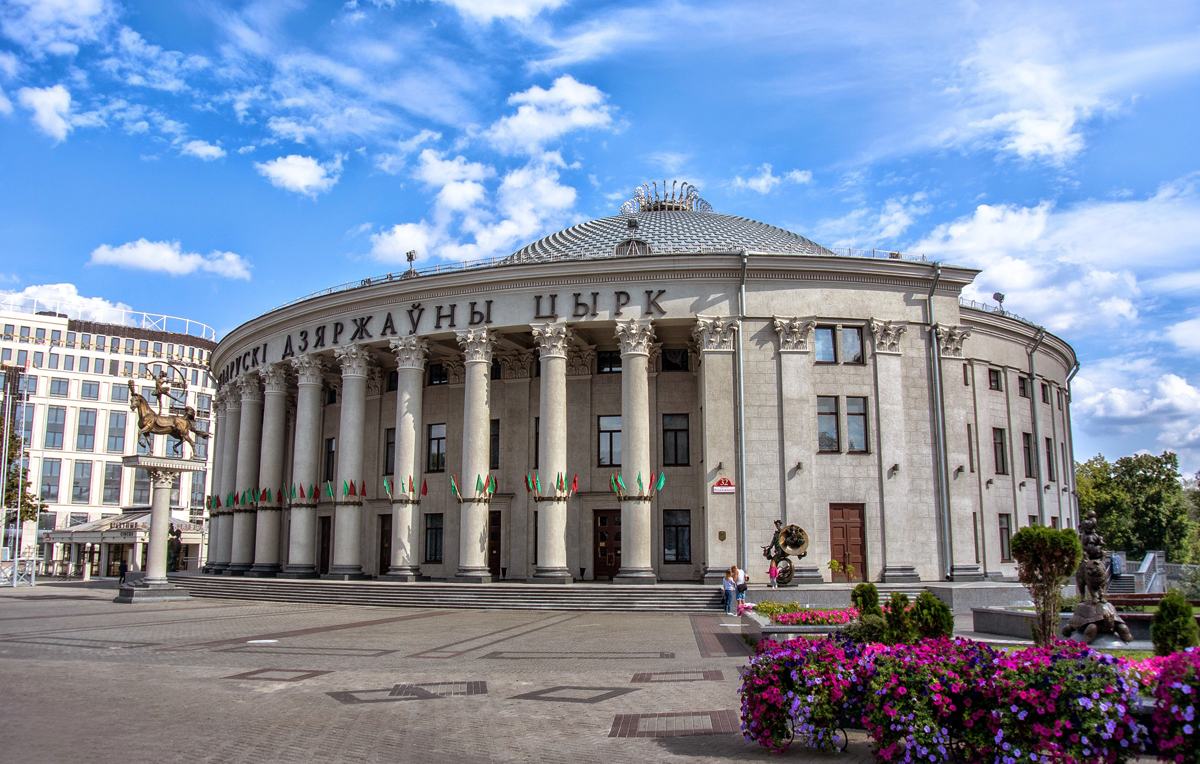
Nearby is Victory Square with the main monument of Belarus — an obelisk dedicated to the victory in the Great Patriotic War. Its height is 38 meters.

Yakuba Kolasa Square is located not far from Victory Square. The second department store, TSUM, opened here in 1964. Nearby is Komarovsky market, the main food market in Minsk.

There are several educational institutions up the avenue: BNTU, BSUIR and the Academy of Arts. And also the temple of Belarusian science —the National Academy of Sciences. The Academy building, opened in 1929, is a typical example of constructivism.
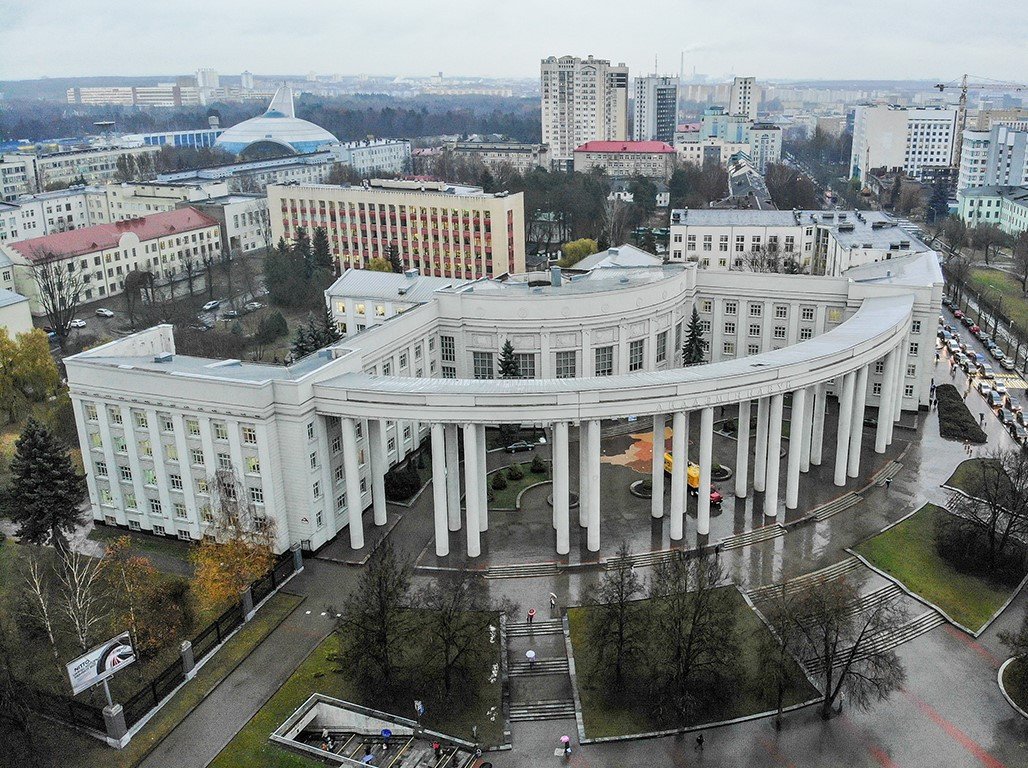
The "October" Cinema is one of the largest and most popular cinemas in Minsk. There are several halls in it, the largest is designed for 1180 seats. It is included in the list of the best cinemas in Minsk.

The next interesting places are Chelyuskintsev Park with the Central Botanical Garden. These are also the best parks in Minsk. The oldest metro station in Minsk is located nearby.

Now begins the quiet part of Independence Avenue — the residential district "Vostok". Its building began in 1963. And five years later the metro station was built in this area. Main sights of these place are several houses decorated with Soviet mosaic panels.

Opposite them, there is the National Library located. This is a modern building, opened in 2006. The river embankment runs below and there also lies a park. Near the library there is one of the largest shopping centers in Minsk — Dana Mall.

The last architectural sight of Independence Avenue is one of the academic buildings of the Belarusian National Technical University, where the faculties of construction and architecture are located. The building was opened in 1983. Unofficial it is called "the ship" because of its unusual appearance.
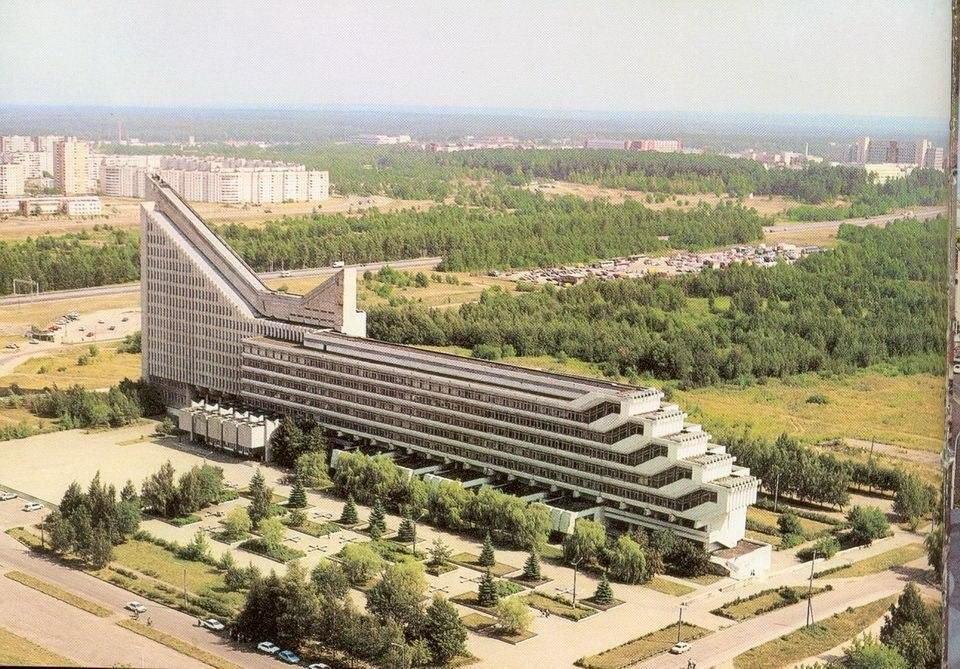
You can continue your walk around Minsk with our guide, where we talked about the 10 most important places of the city.
Follow us on Facebook, LinkedIn!
Photo: positivecreativ.ru; relax.by; tripplanet.ru; photobuildings.com; wikimedia.org; bcp.by; tonkosti.ru; belarusinfo.by; scientificrussia.ru; bestbelarus.by; dic.academic.ru; luxsoft.by; bntu.by



 Back
Back

